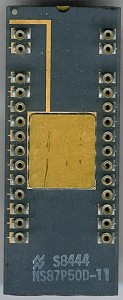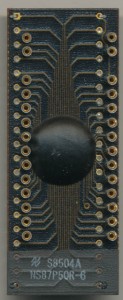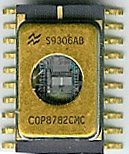Dallas: Reaffirming the Viability of the 8-bit Processor
The introduction of the Dallas Semiconductor DS87C520 reaffirms the viability of 8-bit processors for new and demanding applications. Those were the words written about the the Dallas DS87C520 (and its ROMLess version the DS80C320) in 1994. The Intel MCS-51 architecture it was based on had been released 13 years prior, in 1981 and ran at up to 12MHz. By 1994 the Pentium had been released, with speeds of up to 100MHz. Full 64-bit processors were also available, yet the 8-bit processor continued to hold on, and grow.
Dallas Semi. was founded in 1984, by former Mostek employees. Their first products were lithium battery backed SRAMs, a product pioneered by Mostek. Dallas added power saving and sensing circuitry to them though, greatly enhancing their usefulness. In 1987 they combined with with an MCS-51 microcontroller to make the DS5000, which ran at 16MHz and provided battery backed SRAM.
With the release of the DS87C520 in 1994 they redesigned the MCS-51 core, allowing it to complete a machine cycle in 4-clocks vs the original 12. They were plugin compatible, providing a simple speed up for 8051 systems. Max clock was also raised, to 33MHz as well as additional interrupts, 16K of EPROM, an extra 1KB of SRAM and many power saving features/modes. Other companies (such at Philips, and Atmel) began to also make enhanced 8051s, including things such as Flash memory and expanded instructions/features.
- Dallas DS87C520 original test wafer framed with DS87C520 finished processor and block diagram. A tribute to the chip that once again proved the viability of 8-bits.
- 87C520 Test Wafer – MCU dies are interspersed with test patterns and SRAM cells.
- 87C520-WCL – 33MHz – Made in 1998
- Block diagram of the 87C520 core
Its now 2015, and the 87C520 continues to be made, as does hundreds of other MCS-51. It was surprising in 1994 that the 8-bit processor continued to be viable, and perhaps to some, even more so, that 21 years later, it is still viable, and shows no signs of slowing down. The recent push into the Internet-of-Things (IoT) market has 8-bit MCUs in Internet of Things yet again. While many companies have marked numerous 16-bit and 32-bit designs as ‘a migration path from 8-bit’, that migration is yet to be seen. There simply is no reason, no need, and no desire to plug a 32-bit processor in where an 8-bit processor, implemented in a few thousand transistors, will do nicely.
Posted in:
CPU of the Day, Museum News










